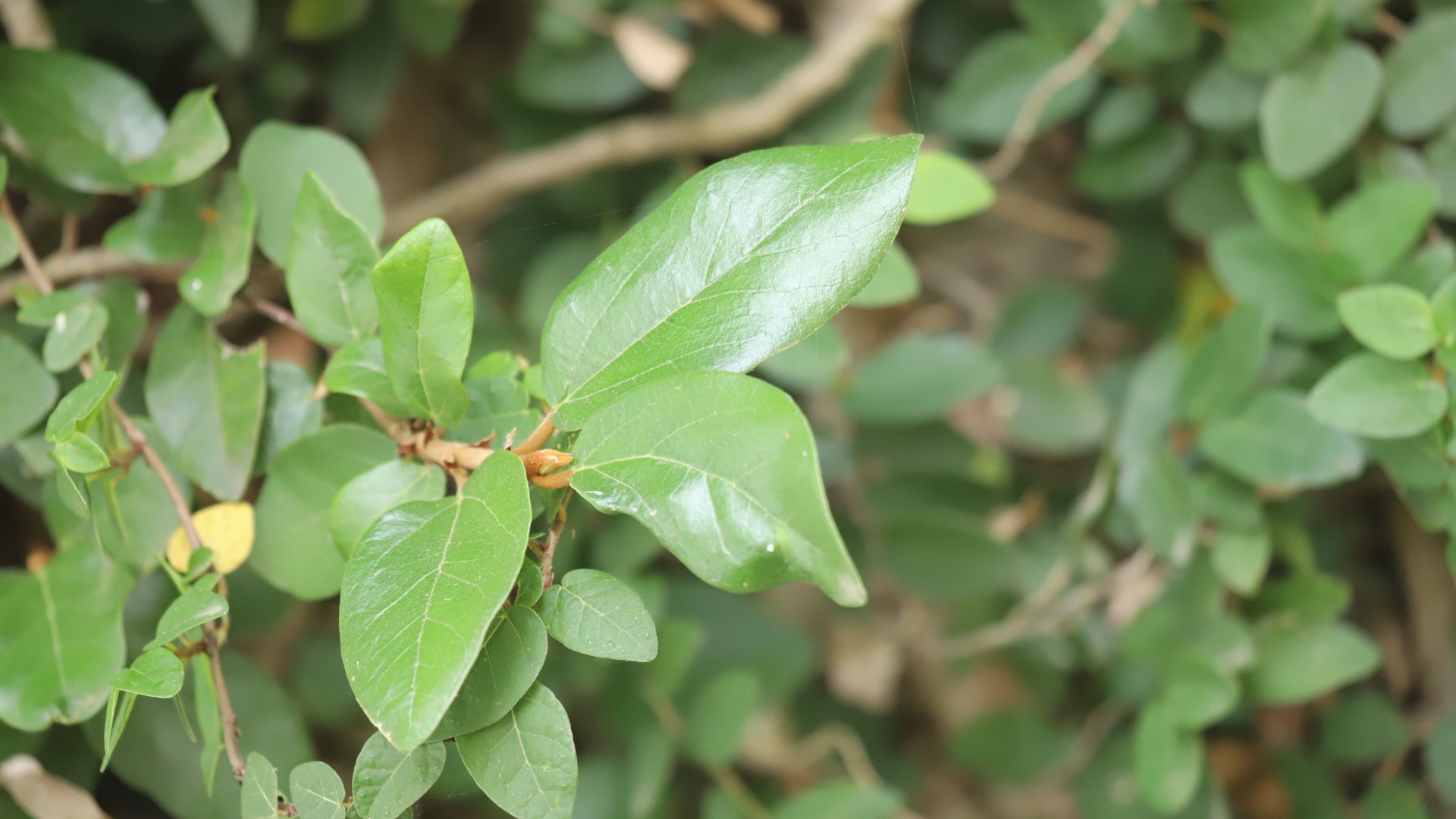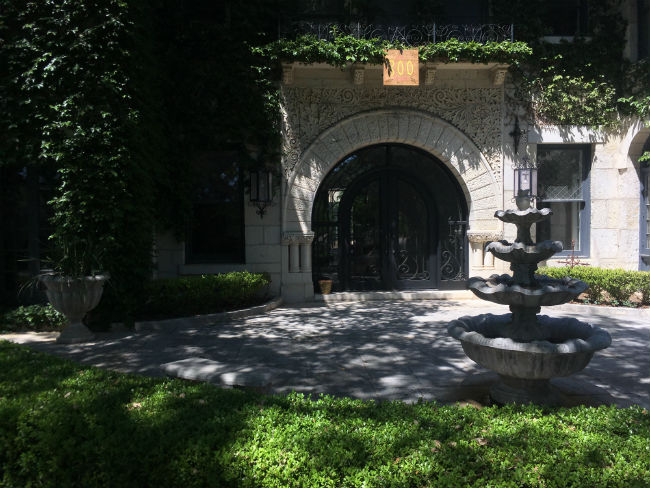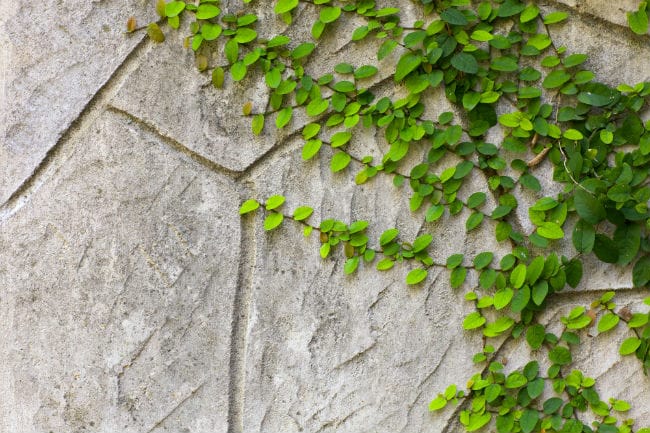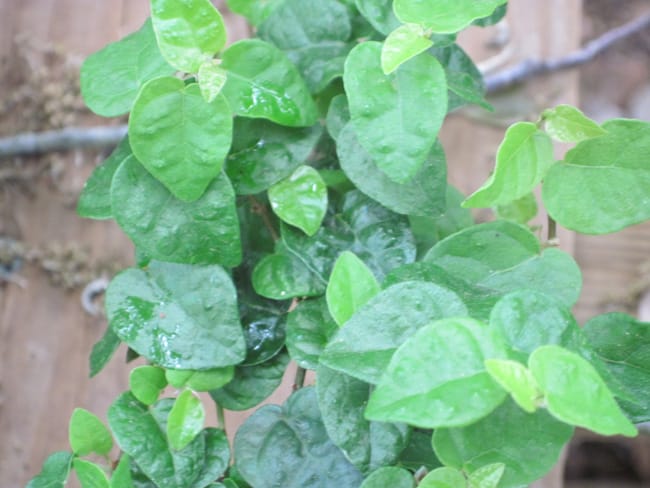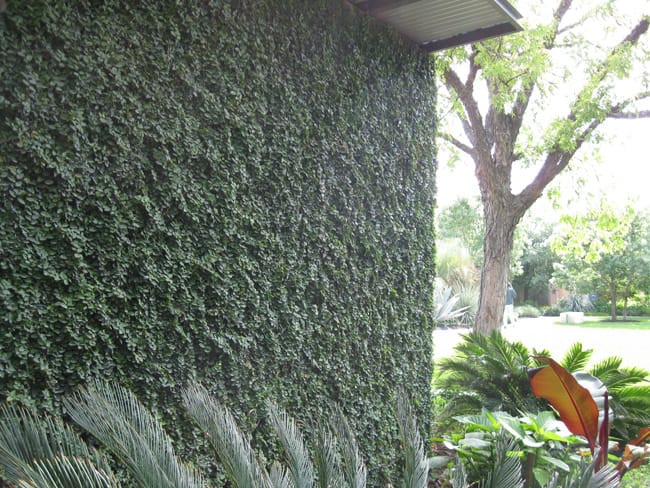Sun/part shade. A widely used ground- and wall-cover, able to climb and coat walls and fences, thanks to its woody tendrils; eventually these grow into 1″ trunks. A mature plant can fuse into wooden surfaces and finishes. Fig ivy is increasingly considered invasive by reputable sources, although it hasn’t yet spread widely into natural areas; however, this reputation definitely provides a hint of its tenacious nature.
Fig ivy can also be grown as a potted houseplant in indirect light. The young leaves are small and leathery, but later the leaves become so large and fleshy that they may look like an unrelated plant.
See fig ivy growing at the Sunken Gardens waterfall in Brackenridge Park.
Regular hedging may help sprawling boughs from peeling off of walls. Vines are difficult to remove from walls and fences without leaving behind barnacle-like tendrils, even in concrete.
Severe damage can be expected after extreme freezes.
